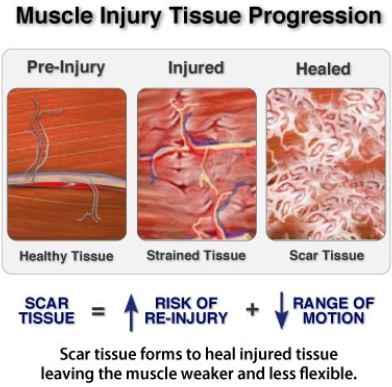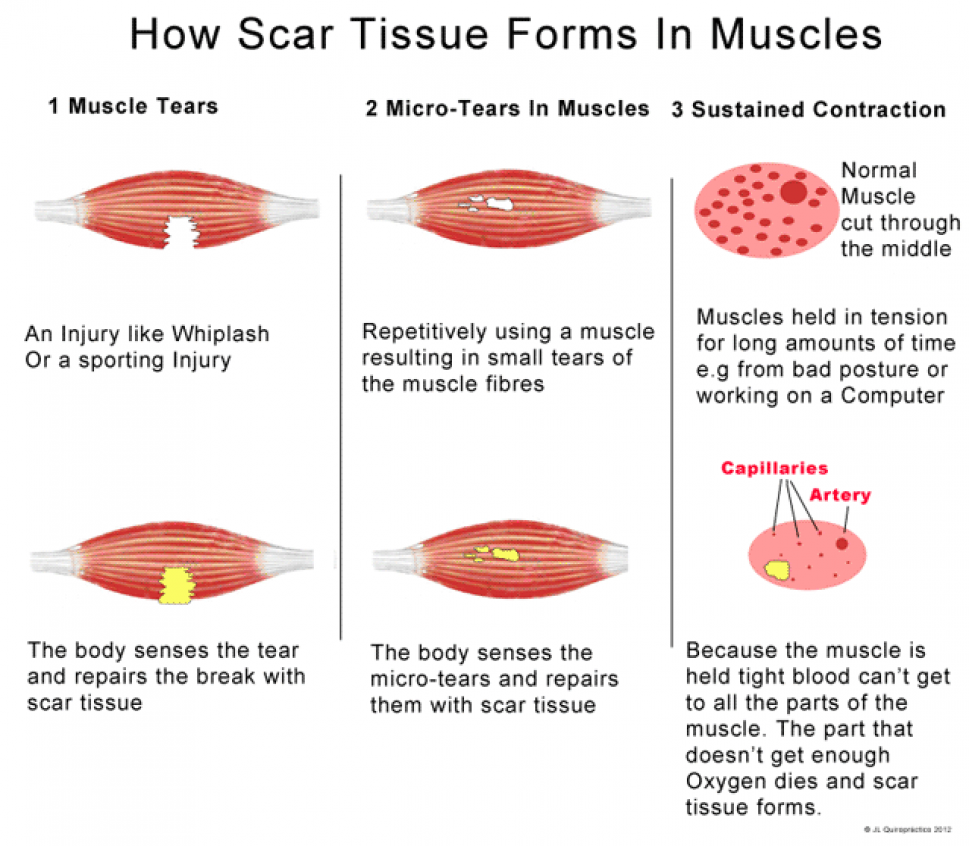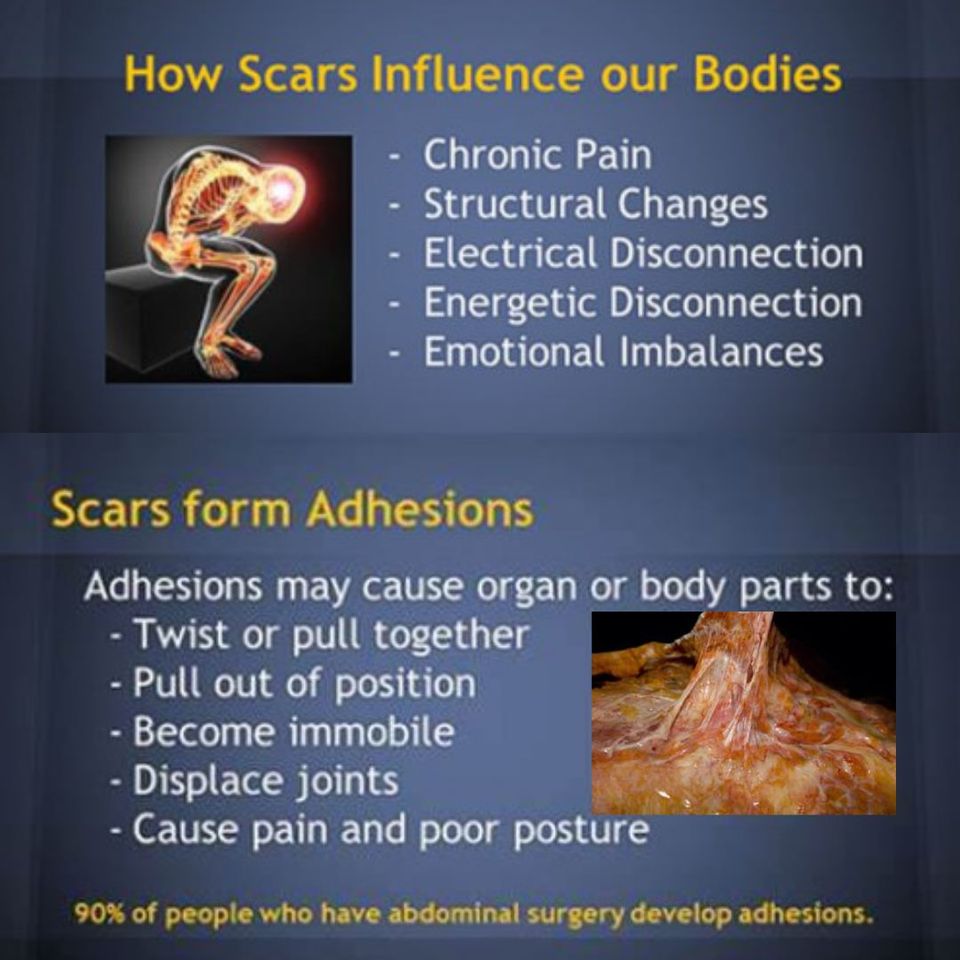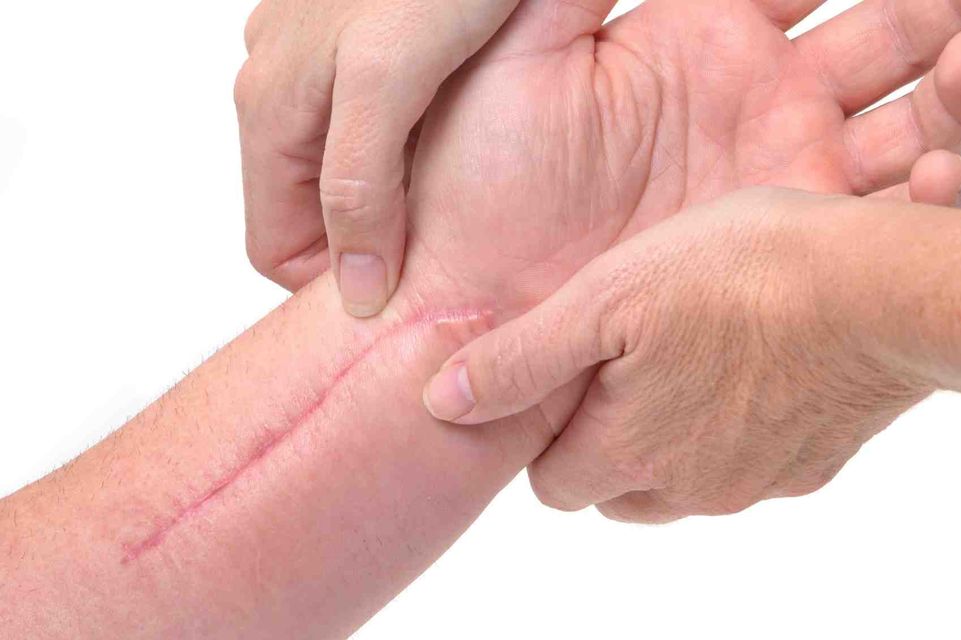How Massage Can Be Used On Scar Tissue
I see many clients who want to either relax scar tissue because it is causing pain or some other kind of dysfunction, or minimise it for cosmetic reasons. Any scarring, whether from a childhood accident or from surgery, can have a lifelong effects, but scar tissue release aims to release and re-align the body’s connective tissue, with scars often becoming less visible as a result. While there is not one single method that works for every type of scar tissue, there are methods that are usually more effective based on the extent of the scarring. Specialist massage techniques can treat pain and immobility even from very old wounds
WHAT ARE ADHESIONS AND SCAR TISSUE?
SCAR TISSUE:-
• collagen fibres that help protect and strengthen a wound as part of the body’s healing process, in response to injury, illness, surgery and other medical treatments
• a concentration of thick, pale fibres formed on the skin or internal organs with limited flexibility, circulation and sensation
• sometimes too much tissue grows and interferes with the body’s functioning
ADHESIONS:-
• part of the body’s healing process, response to injury, illness, surgery and other medical treatments
• fibrous bands, or thin sheets of tissue, that grow as a result of trauma to the body
• they stick other tissues and/or internal organs together restricting movement and causing pain
• they have different names according to size and location e.g. cross links, micro-adhesions
• surgery to cut adhesions causes more adhesions pushing patients into an adhesion/surgery cycle

Scar tissue will never function like the original tissue. Soft tissue treatment not only helps to reduce the formation and appearance of scars but also to reduce any resulting tightness, restriction of movement
WHY DOES SCAR TISSUE FORM?
• STAGE 1:INFLAMMATION - When a wound occurs, the immune system clears bacteria and debris in preparation for healing, causing heat, redness and swelling. This inflammatory phase lasts for 3-6 days.
• STAGE 2 :REGENERATION- for approximately 4 weeks (dependant on wound size), new collagen fibres and new blood vessels are formed, the wound slowly contracts and new skin begins to form
• STAGE 3:MATURATION - new collagen forms increasing the strength of the tissue and changing the shape of the wound area. This stage can last up to 2 years.

CAUSES OF SCAR TISSUE
• following a muscle strain when the fibres are can’t cope with the force placed on them
• surgery can cause scars beyond the typical type of scar tissue
• any trauma eg.fractures, sprains, cuts, burns
• other medical issues/treatments eg:-
- inflammation and infection
- colitis
- diverticulitis
- pelvic inflammatory disease
- endometriosis
- hepatitis
- radiotherapy
• after surgery or injury the body doesn’t know how to arrange collagen cells which are usually aligned in specific ways to promote tissue strength, so they clump together causing scar tissue. However, it is possible to remodel this scar tissue to resemble healthy tissue again

WHY SCAR TISSUE MANAGEMENT IS IMPORTANT
Treatments to promote healthy tissue as early as possible will help prevent further problems and allow the injured tissue to tolerate everyday stress and forces
• reduce pain
• improve range of motion in surrounding joints and muscles
• restore normal mobility and function
• improve appearance
• helps prevent build up scar tissue around nerves which can lead to pain and numbness
• scar tissue and adhesions around the ovaries, uterus and testes can affect fertility
• scar tissue and adhesions can affect functioning of the intestines, liver, heart and lungs, also affecting breathing
It is important to a therapist experienced in scar tissue as treatment done where scars are not fully healed could delay healing or expose the scar to infection.
TREATMENT
• massage - can benefit scar tissue involving muscles, tendons, ligaments, or joints by relaxing the muscles involved & helping to restore nerve function. Changes to the scar tissue itself may take time but in the meantime improved mobility in the area of the scarring will be apparent
• stretching & flexibility exercises
– alongside massage to help lengthen & improve the mobility of injured tissues
- Treatment on new scars & adhesions should wait until at least 12 weeks – (longer for abdominal/visceral scars).
- At least 6 treatments are recommended for scarring, unless superficial.
- On scars less than 2 years old it is possible that the scar tissue may completely go with the right treatment.
- Adhesions should be treated twice a week over several months, depending on the size of the adhesions & how long they’ve been there.

BETWEEN TREATMENTS:-
• warm the area with hot water bottle – heat helps to loosen the fibres
• place a compress soaked with caster oil on the affected area for 60-90 minutes to help break up scars & adhesions
OTHER TREATMENTS:-
• oils with aloe vera & Vitamin E extracts or lavender oil -will moisturise minor scars due to cuts or burns, help to soften the dead tissue & slowly reduce the size of the scar. It may also help to fade the scar
• cosmetic silicon gel – sometimes used after cosmetic surgeries to reduce the appearance of a scar
• vitamin C&E supplements – may help facilitate healing by boosting the immune system & help granulation of healthy skin around the scar. Beta-carotene & zinc may also benefit
• dermabrasion – for heavier scarring will reduce the dead tissue to restore an even texture and hue to the skin. This may be the best way to deal with scar tissue that can’t be minimized through other methods
• surgery – last resort to remove the accumulation of the tissue if no other treatment has reduced the scarring. Surgery is more likely with soft tissue injuries where scar tissue develops around a tendon or ligament. It must be noted that surgery itself will form scar tissue
SCAR TISSUE MASSAGE TECHNIQUES
STAGE 1- soft tissue treatment will focus on assisting the body to reduce swelling using gentle strokes away from the wound site, whilst avoiding direct pressure or manipulation
Stage 2 - if the pain level allows , mobilisation of the injured site can encourage blood flow & reduce the formation of adhesions
STAGE 3 - more direct & intense treatment on the scar itself once the wound has closed, to restore restricted movement due to fibrous adhesions, scar tissue & shortened structures
• LUBRICATION – oil containing vitamin E will keep the scar and surrounding skin pliable during treatment
• WARMING the tissues to lengthen & re-align them
• KINESIOLOGY TAPE – may be used to provide a low-intensity stretch to help align collagen cells
• CROSS FIBRE FRICTION to massage perpendicular to the scar for 5–10 minutes. This helps align collagen fibres by breaking up the hardened tissue
• MYOFASCIAL RELEASE- the hands slowly massage the skin and underlying tissues around the scar, feeling for restrictions in the fascia, and working to improve movement
• INSTRUMENT ASSISTED MASSAGE- stainless steel instruments of various sizes may be used to mobilize tissues, helping break up the built-up collagen cells
• STRETCHING exercises to maintain flexibility & muscle length
